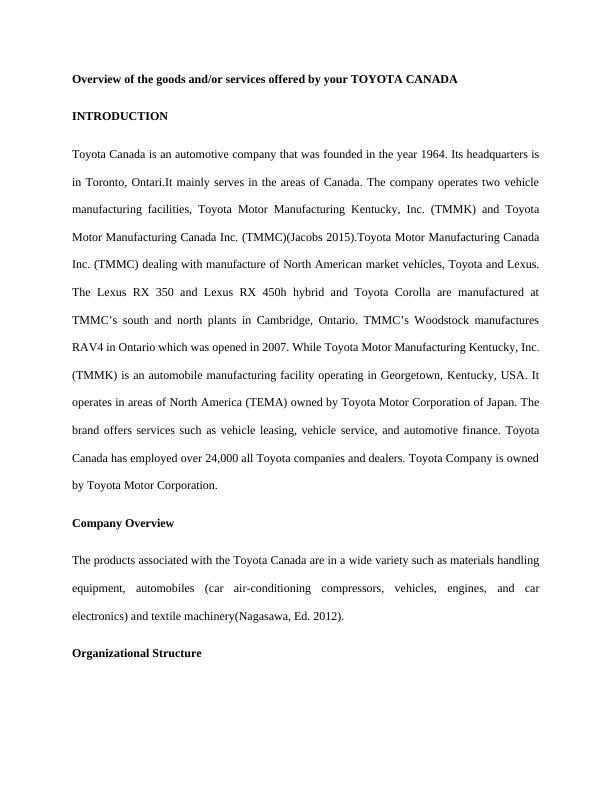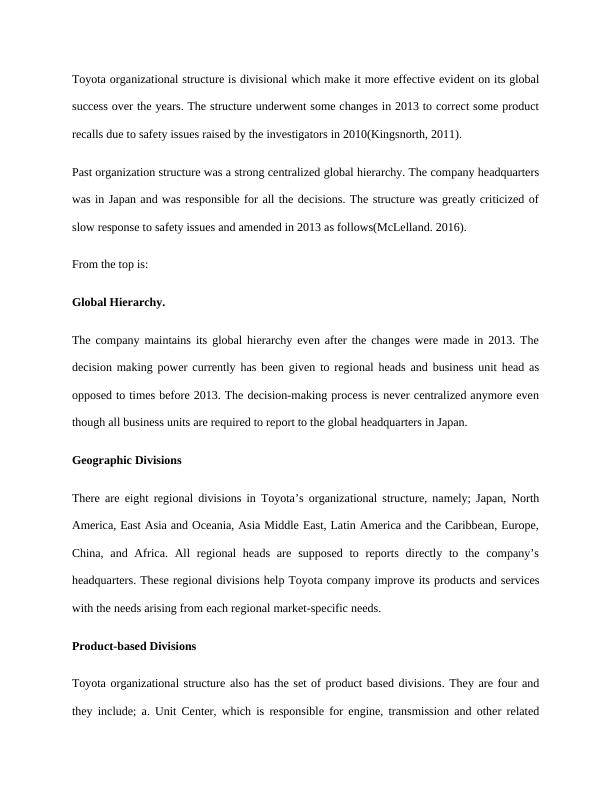Toyota Canada Supply Chain Risk Management (SCRM)
Students are required to contact Toyota Canada to obtain information about the challenges faced by upper level management and collar workers in the process of implementing Supply Chain Risk Management (SCRM). The report should include an overview of the goods/services offered, organizational structure, ERM structure, internal challenges, challenges faced by managers and low-end system users, and a conclusion on the successful or unsuccessful implementation of ERM within the context of SCRM.
Added on 2023-06-12
About This Document
Toyota Canada Supply Chain Risk Management (SCRM)
Students are required to contact Toyota Canada to obtain information about the challenges faced by upper level management and collar workers in the process of implementing Supply Chain Risk Management (SCRM). The report should include an overview of the goods/services offered, organizational structure, ERM structure, internal challenges, challenges faced by managers and low-end system users, and a conclusion on the successful or unsuccessful implementation of ERM within the context of SCRM.
Added on 2023-06-12
End of preview
Want to access all the pages? Upload your documents or become a member.




